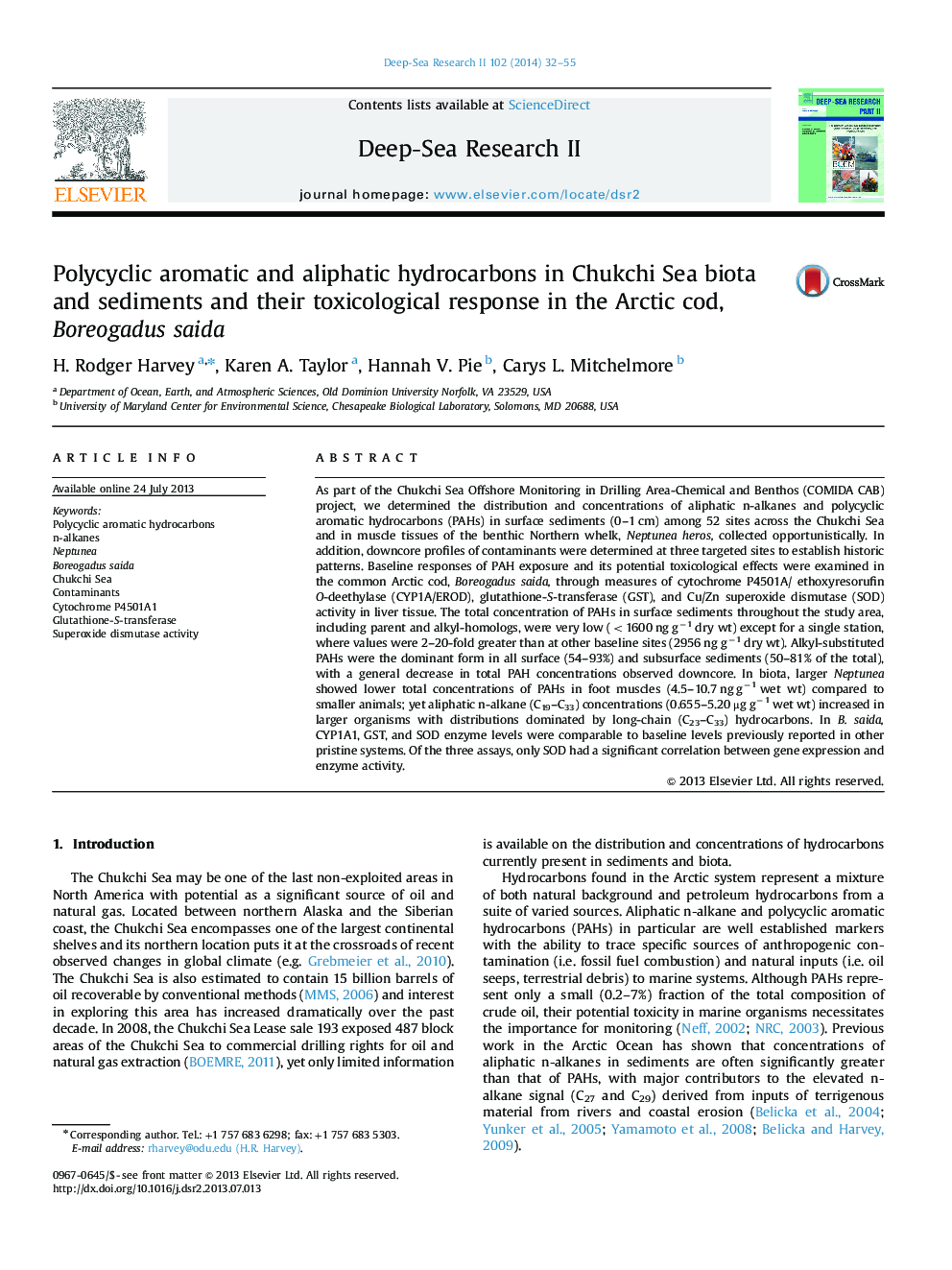| کد مقاله | کد نشریه | سال انتشار | مقاله انگلیسی | نسخه تمام متن |
|---|---|---|---|---|
| 4536411 | 1626438 | 2014 | 24 صفحه PDF | دانلود رایگان |

As part of the Chukchi Sea Offshore Monitoring in Drilling Area-Chemical and Benthos (COMIDA CAB) project, we determined the distribution and concentrations of aliphatic n-alkanes and polycyclic aromatic hydrocarbons (PAHs) in surface sediments (0–1 cm) among 52 sites across the Chukchi Sea and in muscle tissues of the benthic Northern whelk, Neptunea heros, collected opportunistically. In addition, downcore profiles of contaminants were determined at three targeted sites to establish historic patterns. Baseline responses of PAH exposure and its potential toxicological effects were examined in the common Arctic cod, Boreogadus saida, through measures of cytochrome P4501A/ ethoxyresorufin O-deethylase (CYP1A/EROD), glutathione-S-transferase (GST), and Cu/Zn superoxide dismutase (SOD) activity in liver tissue. The total concentration of PAHs in surface sediments throughout the study area, including parent and alkyl-homologs, were very low (<1600 ng g−1 dry wt) except for a single station, where values were 2–20-fold greater than at other baseline sites (2956 ng g−1 dry wt). Alkyl-substituted PAHs were the dominant form in all surface (54–93%) and subsurface sediments (50–81% of the total), with a general decrease in total PAH concentrations observed downcore. In biota, larger Neptunea showed lower total concentrations of PAHs in foot muscles (4.5–10.7 ng g−1 wet wt) compared to smaller animals; yet aliphatic n-alkane (C19–C33) concentrations (0.655–5.20 μg g−1 wet wt) increased in larger organisms with distributions dominated by long-chain (C23–C33) hydrocarbons. In B. saida, CYP1A1, GST, and SOD enzyme levels were comparable to baseline levels previously reported in other pristine systems. Of the three assays, only SOD had a significant correlation between gene expression and enzyme activity.
Journal: Deep Sea Research Part II: Topical Studies in Oceanography - Volume 102, April 2014, Pages 32–55